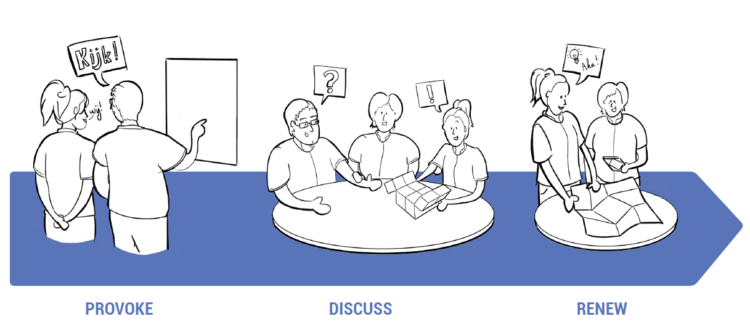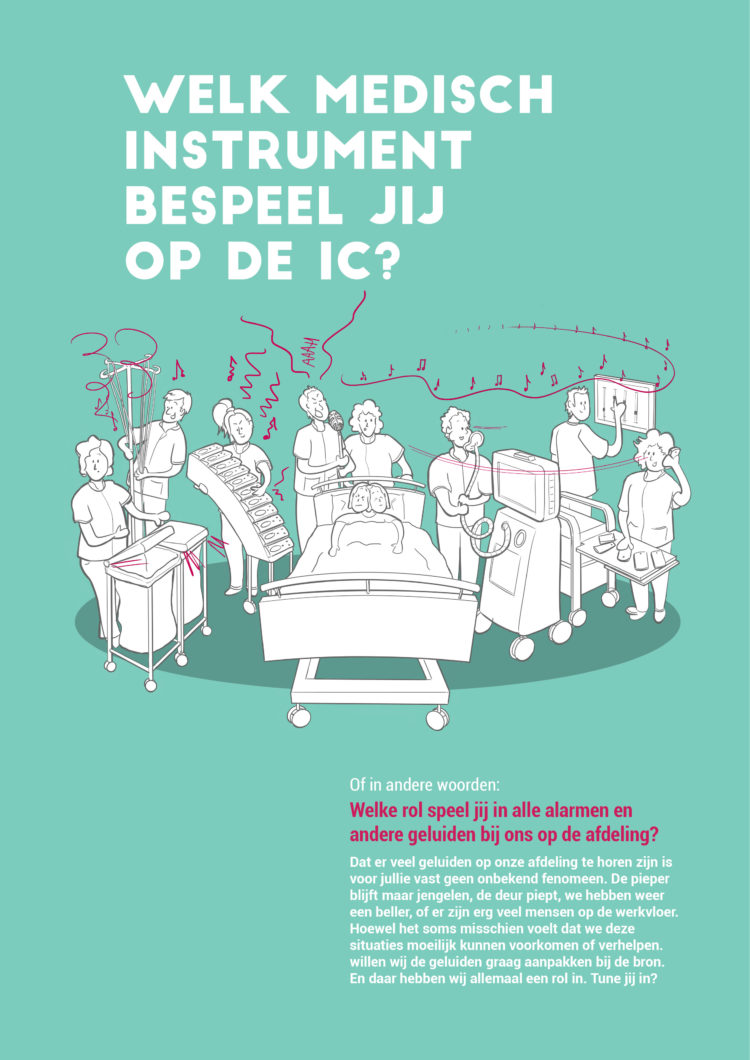A new graduate on the topic of Sound Cultures of Critical Care!
In light of the sound issues in the ICU, Marije aimed to capture the ICU nurses’ sound-related values and practices and to develop an understanding of the phenomenon of sound in a sociocultural context – the so-called ‘ICU sound culture’. By understanding the ICU sound culture, her second aim was to look for opportunities for silencing down the ICU whilst considering the sound cultures.


Three nurse types and core values
The first aim of the assignment, capturing and typifying different ICU sound cultures, was addressed in a field research study with a procedure based on contextmapping. Data was collected through a period of observing six different ICUs and interviewing a varied selection of nine ICU nurses. After an on-the-wall-analysis (Sanders & Stappers, 2012), with the interview transcripts as main input, the research findings showed that nurses working in the same Dutch ICU and nurses working in different ICUs share three (sound-related) core values: autonomously working (together), being situationally aware, and giving and receiving social support. It seems that the accompanying practices are transmitted through learning and typical for the Dutch ICU (sound) culture.
However, nurses from different ICUs but also nurses of one and the same team could differ in their value orientations and practising these. As a result, the nurses can be divided into three types based on shared customs, beliefs and needs, called ‘personas’. The field research showed that similarities and differences exist due to ICU specific sound cultures and ICU specific group cultures within one and the same team.
The three different nurse types are divided due to two driving forces: one’s orientation of wellbeing and one’s sensitivity to sounds. The first two ICU nurse types discovered (Persona 1: Opinionated Professional; Persona 2: Assertive Ally) are experienced ICU nurses. They are confident in taking medical actions and have high situational awareness. Persona 1 and 2 are both sensitive to sounds. The third nurse type (Persona 3: Docile novice) is a less experienced nurse or a nurse who is new into an environment (such as a flex worker). She needs to get familiar with the environment as a whole and/or medical devices. She sees sounds as necessary and part of the job.


After being in the ICU for the first time, I noticed that the context was dynamic and sociable: monitors were beeping, pagers were buzzing, people were walking in and out and clinicians approached me with interest. The welcoming clinicians helped me in adapting myself to the unfamiliar environment.
Marije
A commonality regarding the sound problem
Though different sound cultures and coping strategies with the sounds exist, there is a commonality regarding the ‘sound problem’ (i.e. the excessive amount of sounds in an ICU): in all ICUs, the sounds, or even issues with them, are sort of accepted to a greater or lesser extent due to nurses not knowing why (by being ignorant or indifferent) or not knowing how to reduce sounds. Additionally, the current sound-reducing efforts that do exist are often taken individually, ad-hoc and they have a short-term impact. When ICUs want to reduce the sounds with a bigger impact in the longer term, ICUs need to create ‘sound-issue awareness’ and motivate every individual nurse to act upon the sound issues. This opportunity for silencing down the ICU whilst considering the sound cultures, which was the second aim of the project, was further translated into a campaign for sound cultural change.
A campaign for sound-cultural change
The campaign challenges the ICU management team and nurses to establish a ‘collectivistic sound culture’, in which every individual nurse commits to the group effort and goal to create a more peaceful sound environment in the ICU. Through three practical campaign tools (the spark poster, conversation cube and sound cultura), the nurses will work on achieving and practising the mindset of ‘we need to change’ and ‘we can change’ from bottom-up. The ICU management team will act as a top-down initiator and facilitator. Since a change of minds and behavioural change among the nurses will take time, the actual impact of the campaign can only be measured after a period of time. However, the first group discussions elicited by the tools and research findings among the management team and ICU nurses, and the participating ICUs’ interest in getting to know their sound culture, are good first steps in the joint realization of a more peaceful sound environment.



